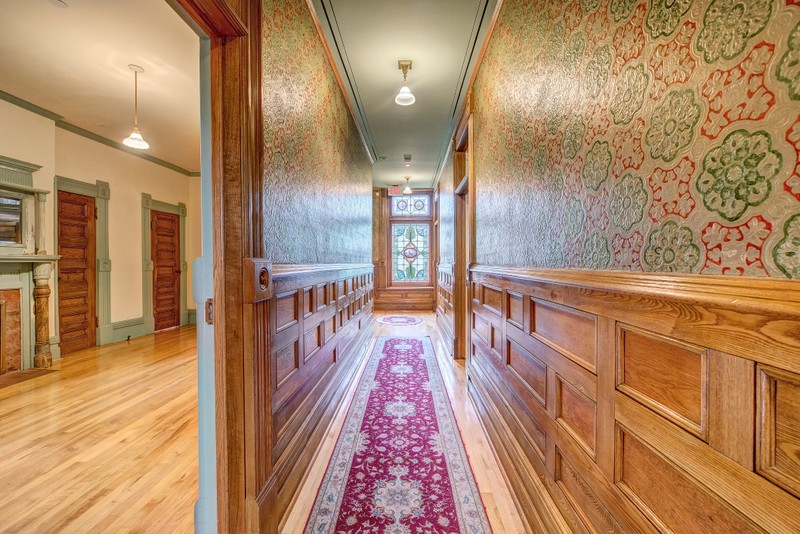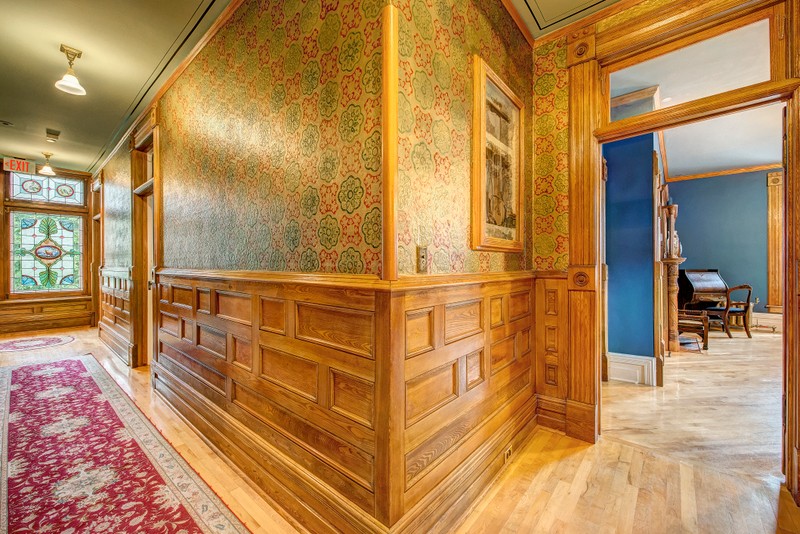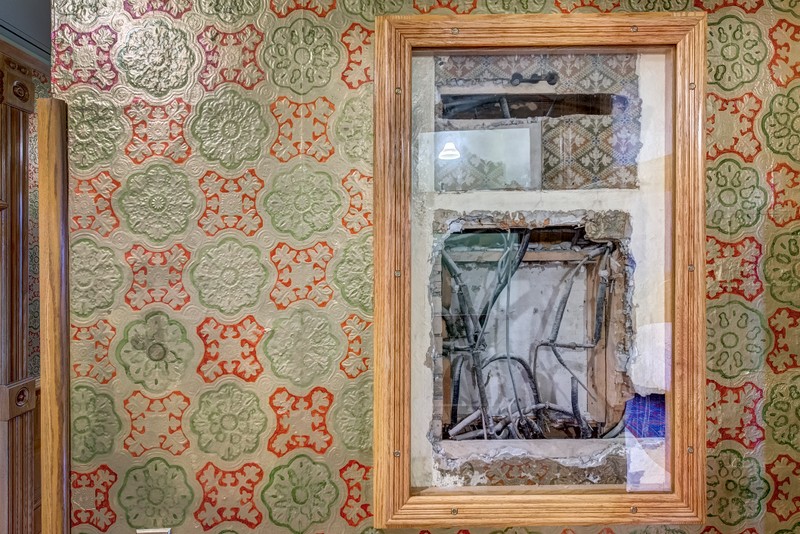Second Floor Hall
Introduction
Author-Uploaded Audio
Listen to a narration of this entry's description by Lougheed House National & Provincial Historic Site .
Text-to-speech Audio
Images
Image 1, Second Floor Hallway, 2020.

Image 2, Second Floor Hallway, 2020.

Image 3, Anaglypta and original knob and tube electrical.

Backstory and Context
Author-Uploaded Audio
Listen to a narration of this entry's description by Lougheed House National & Provincial Historic Site .
Text-to-speech Audio
This is Anaglypta (Image 3).
It is similar in style to Lincrusta, but considerably less expensive, which is why it is found in the upstairs rooms of Lougheed House and not on the main floor.
Anaglypta is lighter and more flexible than Lincrusta, because it is made from wood pulp and cotton. It is still in production today, but is now made of vinyl and paper.
The name derives from the Greek words "Ana" – meaning raised – and "Glypta" – meaning picture. You can see how it gets its name, with its rich texture and intricate patterns.
Introducing…the Live-in Staff.
Naturally, it took a good deal of work to manage a house this size, especially with its frequent guests and social functions.
Workers came and went during the day, and there were only a few who actually lived in the house.
They occupied rooms in the top floor of the house, accessible only by an extremely narrow stairway, and also lived in the carriage house.
Rarely seen and never heard, the service staff also had access to the basement via an equally narrow winding staircase – which led them downstairs to deliver refreshments to guests in the Ballroom.
And who were these people?
Although records are scant, we know there was a full-time cook and maid, as well as staff helping Lady Lougheed with her six children.
A gardener kept the grounds maintained year-round, and stable hands would have fed and watered the family’s horses, as well as looking after the carriages.
Sources
.
Chris Stutz, Chris Stutz Custom Photos
Chris Stutz, Chris Stutz Custom Photos
Chris Stutz, Chris Stutz Custom Photos
